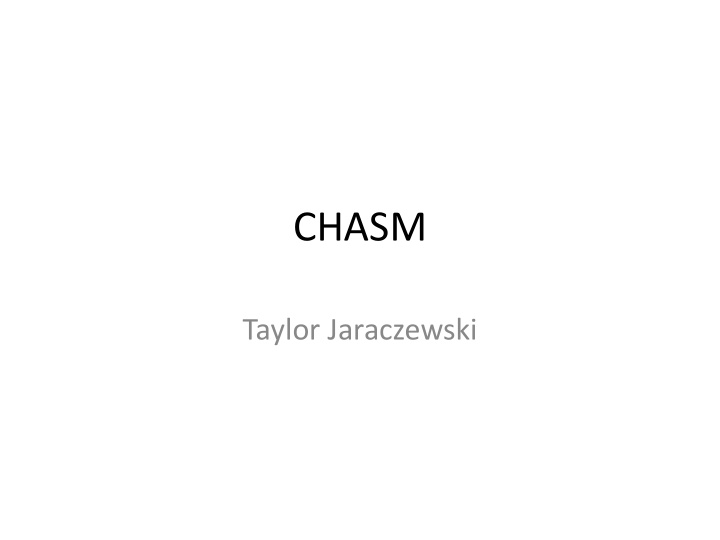



CHASM Taylor Jaraczewski
Background • Yet again….. Drivers vs. passengers • Only a very small fraction of tumors drives proliferation (hill vs. mountains) • Need ways to determine drivers NOT based on frequency • CHASM focuses on missense mutations – Make up majority of mutations
Random Forest Classification 1) Decision Trees
Random Forrest Classifier
Feature Selection - - Feature capable of correct classification would require 2.05 bits of info. Top had 0.37 - Chose 49 features determined by mutual information
General Random Forest Info • Used 500 trees • Used known drivers and synthetic passengers for feature selection and classifier training • Mtry = 7 – Number of variables available for splitting at each node
Comparison to Other Methods Receiver Operator Characteristic (ROC) - Points that reperesent trade-off between sensitivity (fraction of drivers correctly classified) and specificity (“ “ passengers) Precision Recall - Points that represent the trade-off between precision (fraction of true drivers out of all predicted drivers) and recall (sensitivity)
Other Models PolyPhen - Uses Bayes classification; queries BLAST data base to predict impact of amino acid substitution on the structure/function of proteins SIFT – Provides score for probability that a missense mutation will be tolerated. CanPredict – Combination of SIFT score, LogRE score, and GOSS score to train a random forest classifier KinaseSVM – Uses protein kinases
GBM
Recommend
More recommend